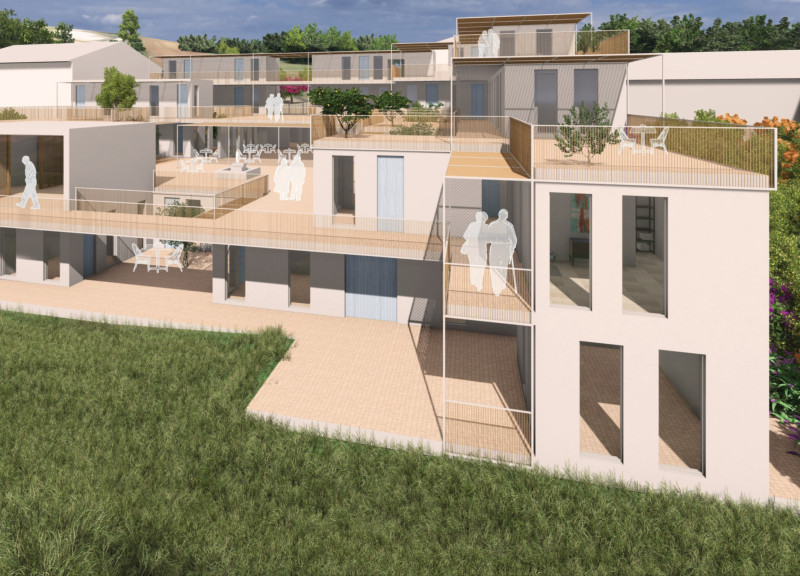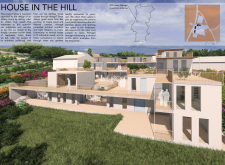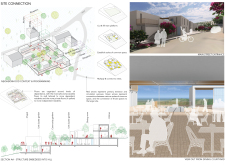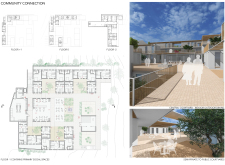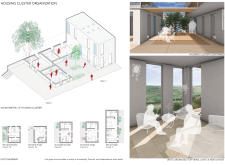5 key facts about this project
## Project Overview
House in the Hill is situated in Leiria, Portugal, and focuses on creating a supportive living environment for elderly residents. The design prioritizes connections with nature and communal spaces that facilitate social interaction, aiming to enhance the quality of life for its inhabitants through thoughtful architectural solutions.
## Spatial Design and Community Integration
The layout employs a multi-level design that adapts to the hilly terrain, minimizing land disturbance while enhancing the natural landscape. Buildings are arranged in clusters around central courtyards, encouraging social engagement while offering individual privacy. These communal areas are equipped with furniture to support various activities, fostering a sense of community among residents. Additionally, the organization of residential units—ranging from standard to accessible—allows for a flexible living experience that promotes neighborly interaction while accommodating personal retreat.
## Material Selection and Sustainability
Material choices contribute to both the aesthetic and functional aspects of the design. Concrete is utilized for structural elements to ensure durability, while wood accents in decking and cladding enhance warmth and foster a connection to the natural environment. Large glass openings maximize natural light and facilitate transitions between indoor and outdoor spaces, further integrating the residents with their surroundings. Terracotta tiles offer a comfortable walking surface that aligns with regional architectural traditions, and metal railings maintain safety without obstructing views. These materials collectively support a sustainable approach focused on durability and harmony with nature.


